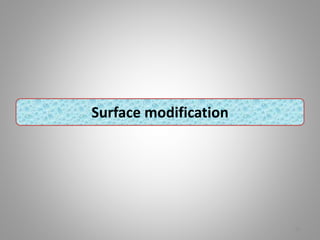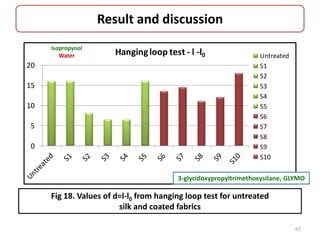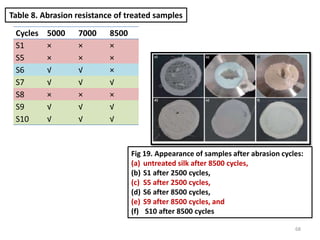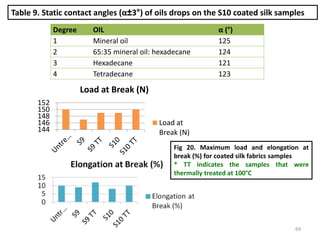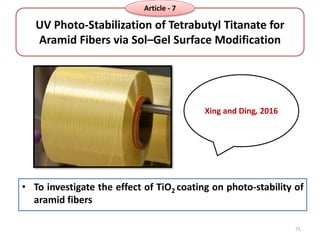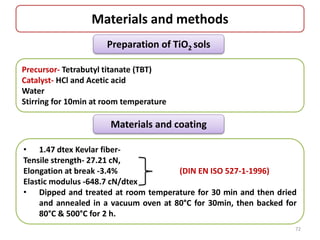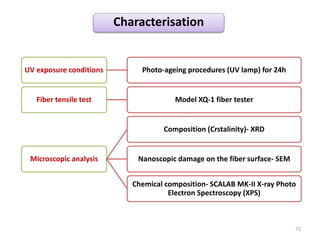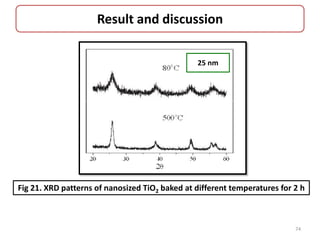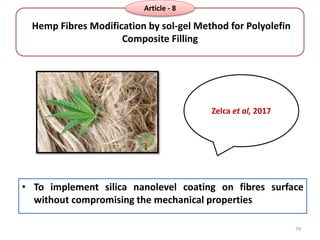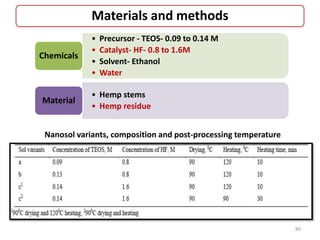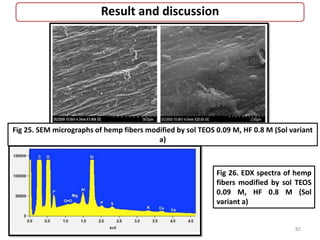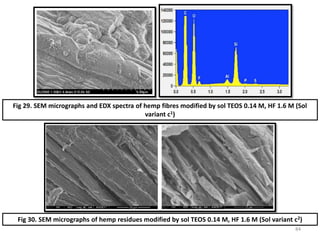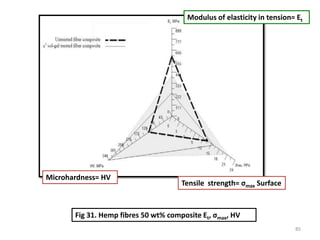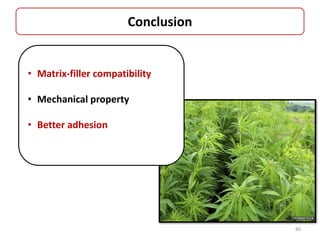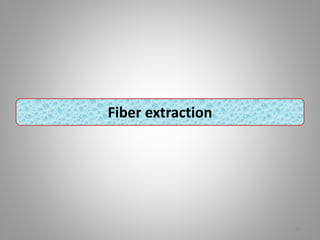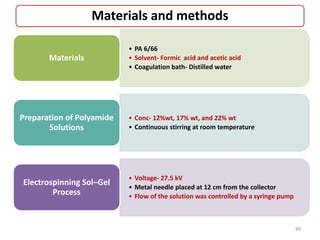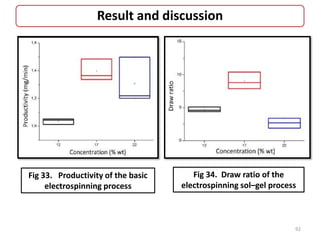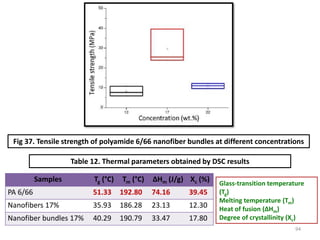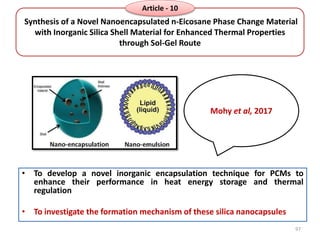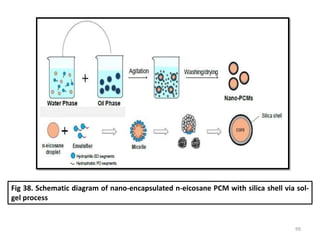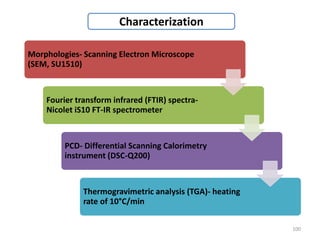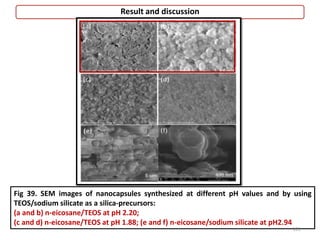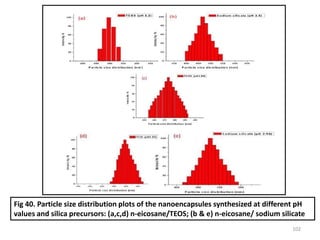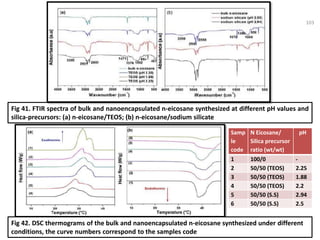The document discusses sol-gel technology for creating nano-textiles, detailing the synthesis methods, applications, and characterization techniques involving nanoparticles. It highlights various studies on nanoparticles, particularly silver and zinc oxide, their antibacterial properties, and the integration with textiles for enhanced functionality. Additionally, it covers challenges and advantages in the sol-gel process, showcasing specific applications like antibacterial coatings and flame retardant features in textile manufacturing.
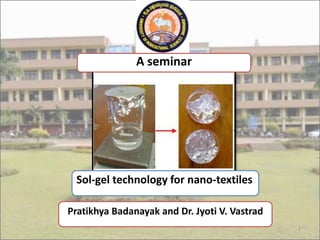







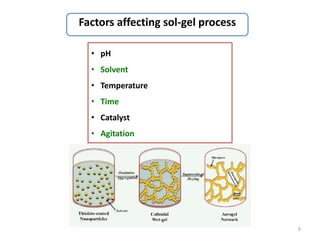

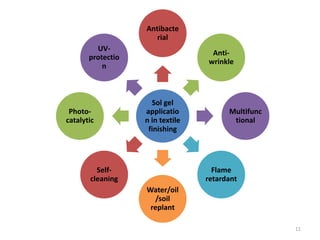

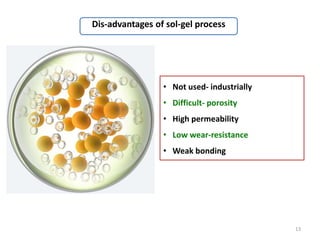






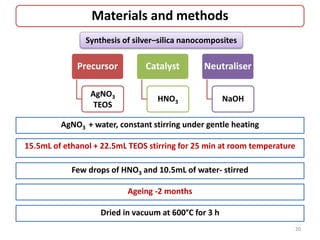
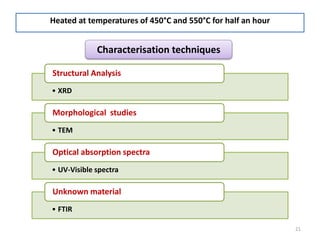
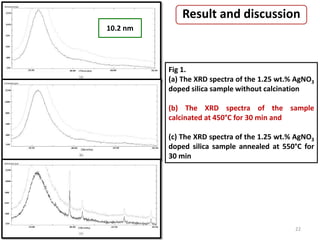

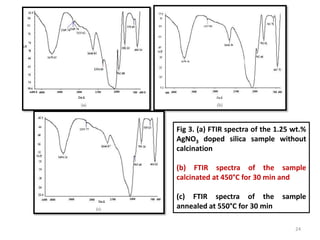













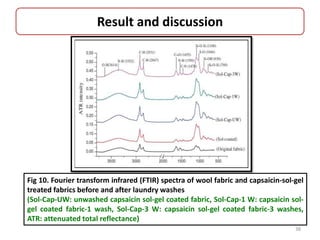









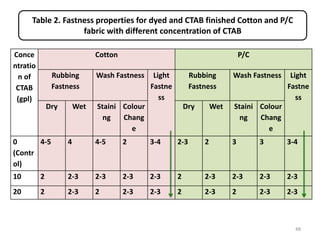



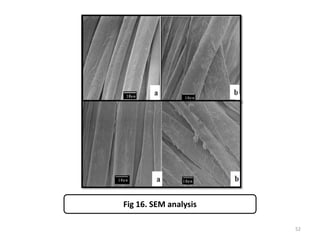


![Materials and methods
100% scoured & bleached cotton fabric
Diethylphosphatoethyltriethoxysilane (DPTS)
3-aminopropyltriethoxysilane (APTES)
1-hydroxyethane 1,1-diphosphonic acid
Melamine
Urea
Hydrochloric acid
Sodium hydroxide
Ethanol
N-hexakis-methoxymethyl- [1,3,5] triazine-2,4,6-triamine (MF)
Materials
Functional finishing of cotton fabric
APTES and DPTS were hydrolysed with HCl in deionized water,
vigorous stirring for 10 h at room temperature
55](https://image.slidesharecdn.com/seminarfin-191224094946/85/Sol-gel-technology-for-nano-textiles-55-320.jpg)
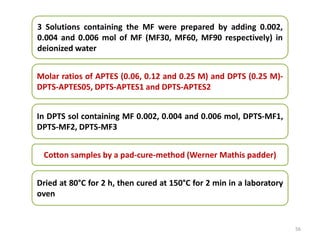
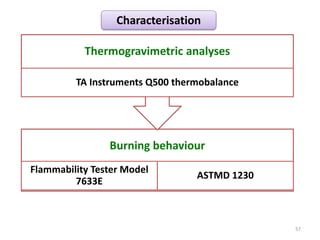
![Result and discussion 58
Diethylphosphatoethyltriethoxysilane (DPTS)
3-aminopropyltriethoxysilane (APTES)
N-hexakis-methoxymethyl- [1,3,5] triazine-2,4,6-triamine (MF)
Fig 17. TG curves of pure and treated cotton fabrics in nitrogen: Weight/% vs
Temperature/°C](https://image.slidesharecdn.com/seminarfin-191224094946/85/Sol-gel-technology-for-nano-textiles-58-320.jpg)
![59
Sample Residue at
360°C [%]
Residue at
750°C [%]
Untreated
cotton
14 2
DPTS 53 23
APTES 41 8
DPTS-APTES05 56 27
DPTS-APTES1 57 22
DPTS-APTES2 60 21
MF30 39 3
MF60 37 5
MF90 31 4
DPTS-MF1 60 20
DPTS-MF2 60 29
DPTS-MF3 60 33
Sample Total
burning
time [s]
Burning
Rate [mm/s]
Residue
[%]
Untreated
cotton
33 10 -
DPTS 35 6 37
APTES 24 7 33
DPTS-APTES05 21 10 60
DPTS-APTES1 20 9 48
DPTS-APTES2 24 8 53
MF30 150 10 27
MF60 51 12 19
MF90 28 8 20
DPTS-MF1 17 10 79
DPTS-MF2 19 8 68
DPTS-MF3 23 7 66
Table 6. Collected data of untreated
and treated fabrics by flammability
tests
Table 5. TGA data of untreated and
treated cotton fabrics in air
Diethylphosphatoethyltriethoxysilane (DPTS)
3-aminopropyltriethoxysilane (APTES)
N-hexakis-methoxymethyl- [1,3,5] triazine-2,4,6-triamine (MF)](https://image.slidesharecdn.com/seminarfin-191224094946/85/Sol-gel-technology-for-nano-textiles-59-320.jpg)
![60
Table 7. Flammability data
Sample Total burning time [s] Residue [%]
Untreated cotton 36 -
Only DPTS (O_D) 24 25
Only bisphosphonate (O_P) 23 10
Only melanine (O_M) 25 2.0
Only urea (O_U) 36 2.0
DPTS- bisphosphonate
combi (D_P)
38 40
DPTS- melamine combi
(D_M)
15 24
DPTS- urea combi (D_U) 25 22
Diethylphosphatoethyltriethoxysilane (DPTS)](https://image.slidesharecdn.com/seminarfin-191224094946/85/Sol-gel-technology-for-nano-textiles-60-320.jpg)

